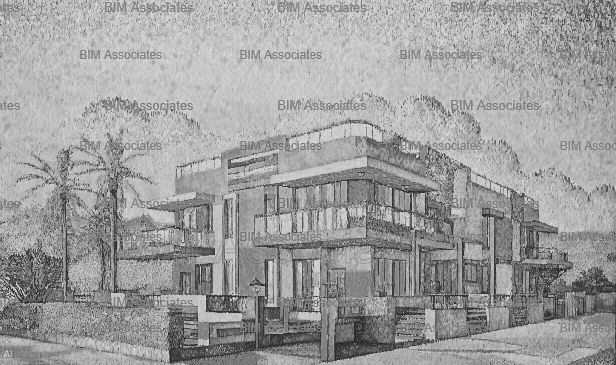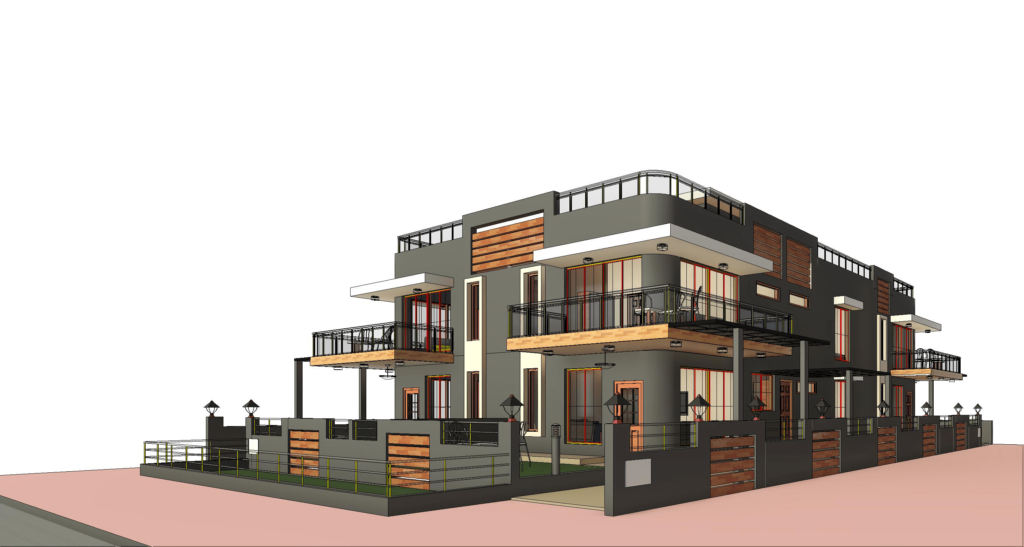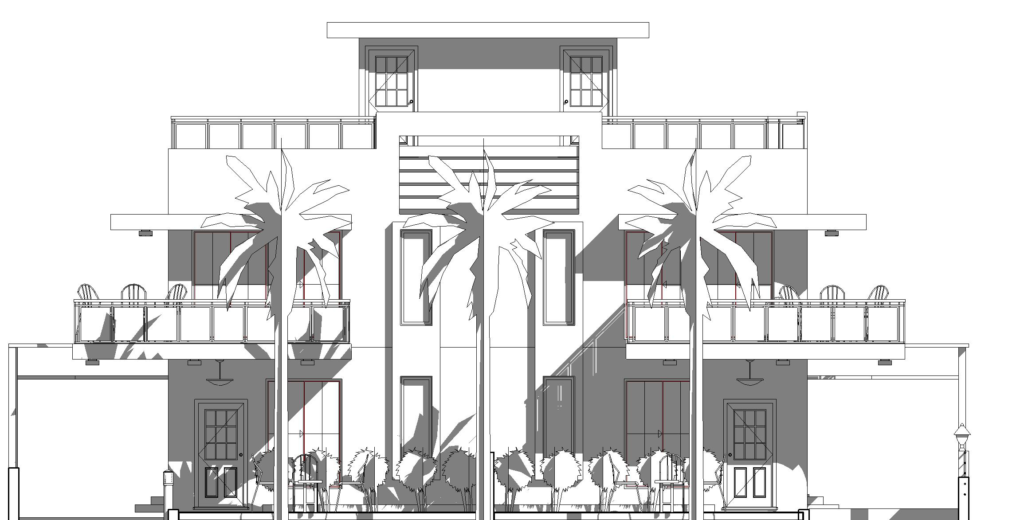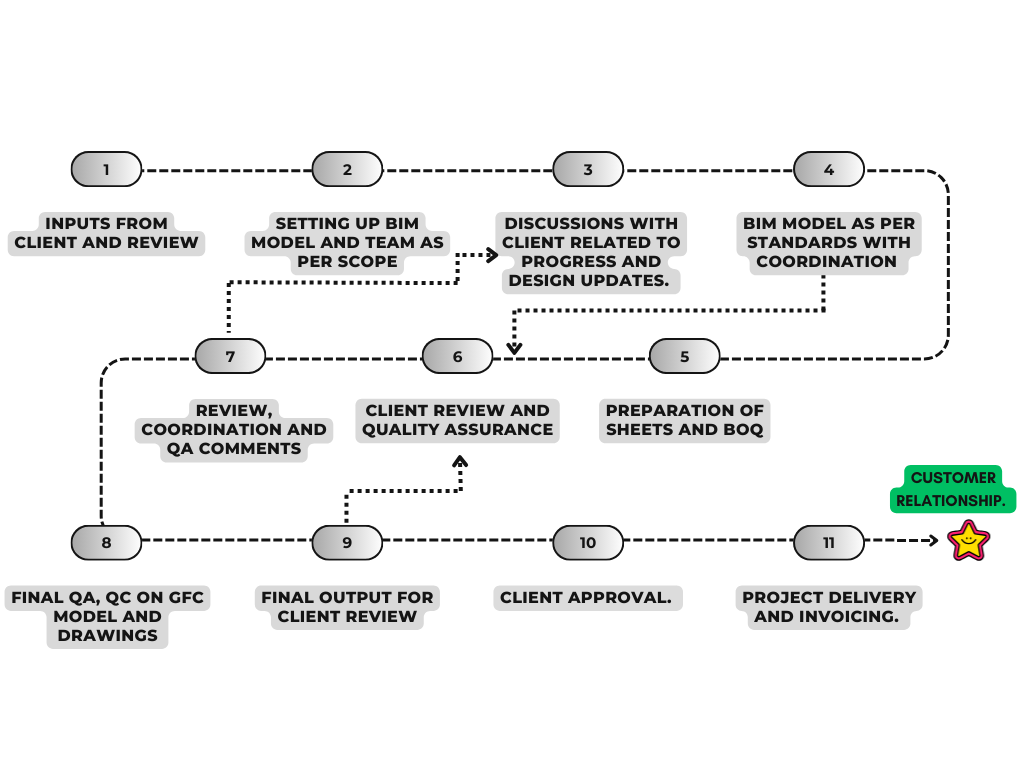Good for Construction BIM Model reduced design conflicts & gave a better hand in construction & BOQ.
Client Profile :
The Client is a leading Architectural design consultant from the EMEA region. They specialise in architectural
residential design.
Business Need :
The client team consists of architectural designers and draftsmen, The scope of this project involved developing a
BIM LOD 350 model that is well coordinated with other disciplines.
- Create an architectural BIM model at the LOD 350 level.
- 2d design, concepts, and sketches were to be converted into a coordinated BIM Model.
- Daily coordination with the design team at the client’s end for design updates.
- Single model was to be used across both geographies.
- Model coordination with other disciplines and prepare
clash report. - Detailed GFX model and drawings with BOQ for ready
on-site use.

Challenges:
Observation of requirements, work flow and changes in the given project in the time line by the project team at
BIM Associates, highlights below challenges.
– Variation in Inputs like sketches, AutoCAD files, Concepts, paintings were received without any dimensions
and levels.
– Incorporating frequent design changes in the project, while the model development on the model was
ongoing.
– Recording all design changes with key stake holder in the model So it can be back tracked.
– Quick ramp up of skilled resources as per the nature and volume of work was challenging.
– Coordination with other disciplines and resolving clashes with all stack holders.


Solution :
BIM engineers at BIM Associates developed LOD 300 Architectural & Structural models. These models had recorded
all of design updates into it. These models were used for daily work detailing and discussion at both
ends and Ultimately GFC set of model and drawings were developed from this after clash co ordination.
Set of GFC output were very helpful on site during construction.
Approach :
On finalising the scope and deliverables needed with the client team, below is the flow/approach that our team
has used :
- Inputs related to scope were received and initial screening was done.
- The BIM Team started developing the Revit model from the sketches, paintings, and AutoCAD Inputs. All central models were stored on the Autodesk Construction Cloud Platform.
- Daily design updates were recorded and discussion was done with the client team during regular calls. This helped the client team to further develop their building design.
- Once all sketches, paintings, and concepts were converted into technical models and drawings, then coordination was carried out with other disciplines.
- We took suggestions and feedback from client at each step, this helped both teams on the project to deliver to their best.
- Quality checks were regularly made and the client was also informed, on how and what parameters quality checks are done.
- Models were continuously supervised by a senior BIM engineer at our end, to maintain quality and standards.
Workflow :
The below is a basic workflow for project. Please note fine details on the same are not shown here.

Software and Technology :
Autodesk Revit, AutoCAD, and Autodesk Construction Cloud.
BUSINESS IMPACT :
✓ Cost Saving and time-zone benefit.
✓ Core expertise and Pro data Utilisation.
✓ Better Skill and Resource Planning for Business Success.
✓ Collaborative Approach for better output.
✓ Coordinated Output for better planning.
